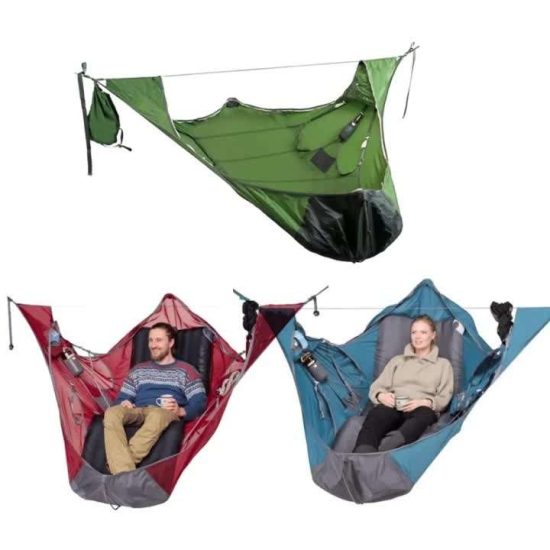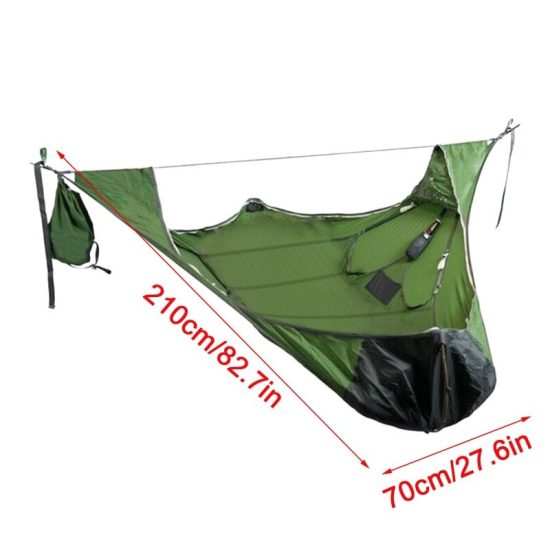Hammock camping can be a fun and unique way to experience the outdoors. Here’s a beginner’s guide to help you get started with hammock camping:
- Choose the Right Hammock:
- Look for a hammock specifically designed for camping, as they often come with durable materials, proper suspension systems, and additional features like bug nets or rainfly attachments.
- Consider factors such as weight capacity, size, and comfort when selecting a hammock.
- Check the Regulations and Campsite Suitability:
- Before heading out, check the regulations of the camping area or national park you plan to visit. Some places may have restrictions on hammock camping.
- Ensure that the campsite has suitable trees or anchor points that are the right distance apart (usually around 12-15 feet or 3.7-4.6 meters).
- Gather the Necessary Gear:
- Hammock: As mentioned above, choose a camping hammock suitable for your needs.
- Suspension System: Get sturdy and tree-friendly suspension straps or ropes to hang your hammock between the trees.
- Tarp or Rainfly: Invest in a waterproof tarp or rainfly to protect yourself from rain or harsh weather conditions.
- Bug Net: Consider using a bug net to keep insects away while you sleep.
- Practice Setting Up Your Hammock:
- Familiarize yourself with your hammock and its setup. Practice setting it up at home before your camping trip to become comfortable with the process.
- Find the Right Campsite:
- Look for trees or anchor points that are sturdy and capable of supporting your weight. Avoid dead or damaged trees.
- Choose a campsite with level ground to ensure a comfortable sleeping position.
- Set Up Your Hammock:
- Wrap the suspension straps or ropes around the trees or anchor points at a height that allows for a comfortable sleeping position.
- Attach your hammock to the suspension system using carabiners or hooks.
- Adjust the tension and sag of the hammock to create a comfortable and flat sleeping surface.
- Stay Comfortable:
- Use additional gear like underquilts or sleeping pads for insulation and comfort.
- Adjust the rainfly or tarp to provide adequate protection from rain, wind, or sunlight.
- Dress appropriately for the weather and bring layers to adjust for temperature changes.
- Follow Leave No Trace Principles:
- Be mindful of the environment and practice Leave No Trace principles. Avoid damaging trees or plants when setting up your hammock and clean up after yourself.
- Practice and Learn:
- With each camping trip, you’ll gain experience and learn what works best for you. Experiment with different setups, gear, and techniques to find your optimal hammock camping style.
Remember to always prioritize safety and comfort while hammock camping. It may take a few trips to refine your setup and find what works best for you, but the experience of sleeping in a hammock amidst nature can be rewarding and enjoyable.


